Maftoul or Palestinian couscous is a traditional staple food in Palestine, typically made and served in occasions and holidays. Couscous is originated in Morocco and brought by Moroccan migrants to Palestine where it has been modified to what’s called maftoul. Although maftoul is considered as a special type of couscous but its made from different ingredients and it also has a different shape.
Maftoul is an Arabic word derived from the root “fa-ta-la” which means to roll or to twist, which is exactly describing the used method to make maftoul by hand rolling bulgur with wheat flour. Palestinian high quality handmade maftoul products are available widely online with good prices comparing to the effort and time needed for making them.
Maftoul from Scratch:
I’ve never made maftoul from scratch before preparing this post, nor watched someone making it. It’s more common nowadays to buy ready-made maftoul from stores. However, I thought it’s very important to know and learn how it’s done the old way like Palestinian grandmothers used to do it. And here I’m sharing the process with you along with directions and photos… Many thanks go to my 70 years old aunt, Itaf, who volunteered to teach me making maftoul from scratch knowing that the last time she made it was more than ten years ago.
Ingredients of maftoul are: 1 ½ cups bulgur, 2 cups white flour, 4 cups wheat flour, and 2 teaspoon salt. Before starting the process of making maftoul, she added 3 cups of boiling water to the soft bulgur and left it to be soaked for about 10 minutes. Meanwhile she mixed white flour with wheat flour and salt, and placed a large empty tray on the table where the process of making maftoul took place.
She started by adding a pinch of soaked bulgur to the tray, a pinch of mixed flour, and then she mixed them together by moving her fingers in a twisting motion until bulgur small pieces got coated by flour (the more you add flour, the bigger size of maftoul you get). She kept adding pinch of bulgur, pinch of flour and water in some cases (when flour is not sticking to bulgur pieces) while mixing them continuously using her most fingers. She put the perfectly shaped pieces of maftoul in an olive-oil greased colander (heat-proof one). She continued to do this process until flour is finished.
After that she placed the colander (that’s full of maftoul ) over a boiling water pot for 5 to 10 minutes. Then she sealed pot edges by dough to prevent steam escaping, it was very interesting to learn this creative technique. Maftoul partially cooking is an important and necessary step in order to keep it in good condition for several days before using it. Another way of keeping maftoul for several months is to dry it by lying it on a warm and shaded surface.
Ingredients
- Stew Ingredients:
- 2 kg chicken, cut into 4 or 8 pieces
- 1 tablespoon olive oil
- 1.5 tablespoon cumin
- ½ teaspoon turmeric
- 1 teaspoon allspices
- 1 tablespoon salt
- 1.5 kg onions, cut into mid-sized cubes
- ½ kg chickpeas, canned or precooked
- Maftoul Ingredients:
- 1 kg maftoul (Palestinian coucous)
- 1 small onion, finely chopped
- 1 tablespoon cumin
- ½ tablespoon salt
- 2 tablespoon olive oil
Directions:
For the Stew: In a large pot, sauté chicken with olive oil for 5 minutes on a medium heat. Add cumin, salt, turmeric, and allspices. Cover chicken completely with water and leave it until it’s partially cooked for about half an hour. Add onions and chickpeas to the partially cooked chicken and leave it for another20 to 30 minutes until it’s all cooked.
- Cooking maftoul by the steam of chicken stew: Place maftoul in the the colander and put it over boiling chicken stew pot while it’s still over heat.
- Cooking maftoul by the steam of boiling water: If the colander you have is small and does not match with the size of chicken stew pot, place it over any other size compatible pot after filling it with boiling water.
After placing maftoul in the colander, make a small hole in the maftoul, add finely chopped onion, cumin, salt. Then close the hole (as if you’re burying onion and spices inside maftoul). Cover the colander by a lid and leave it to be cooked by the raising steam for about 15 minutes until a lot of steam is rising from maftoul colander.
Pour maftoul in a serving plate/pot, add add olive oil and 1 cup of chicken stew to them and stir until well mixed. Pour chicken stew in a different serving bowl and serve hot.


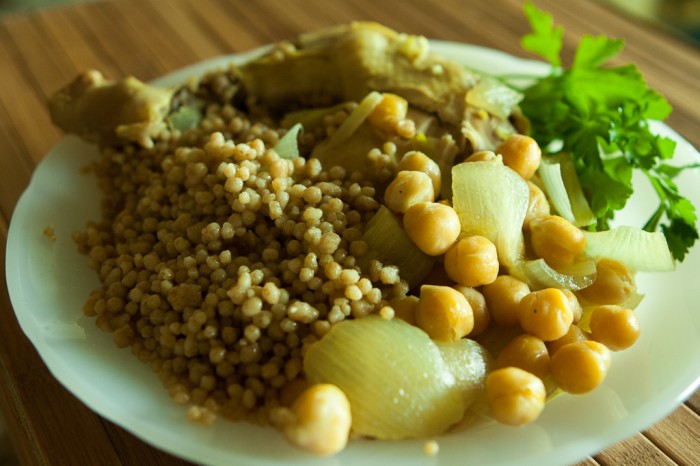
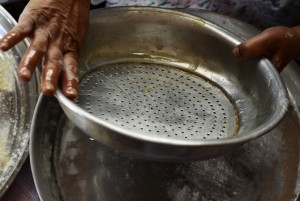
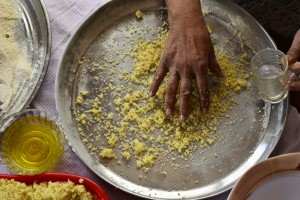
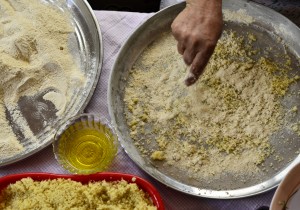
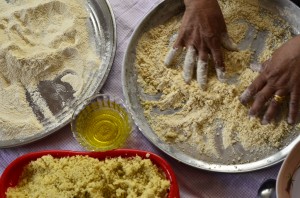
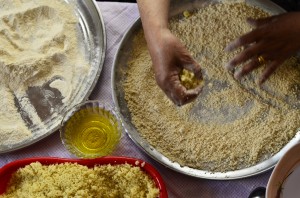
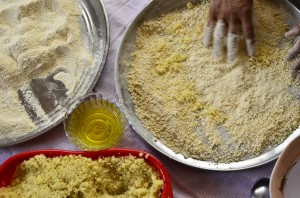
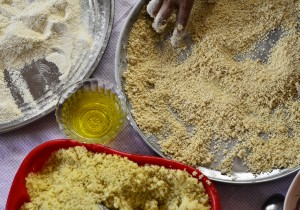
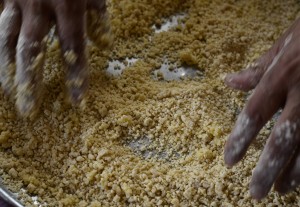
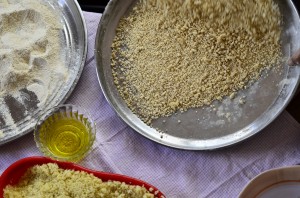
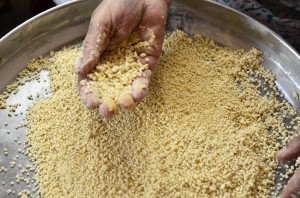
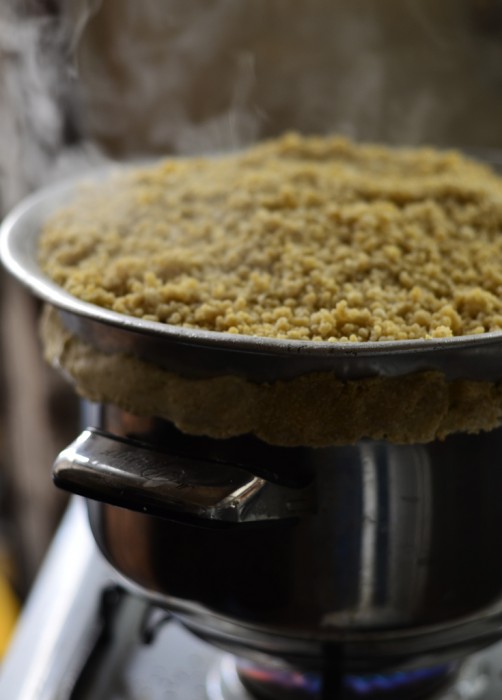
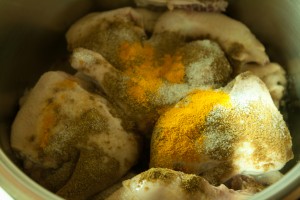
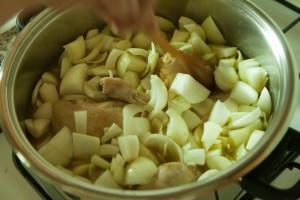
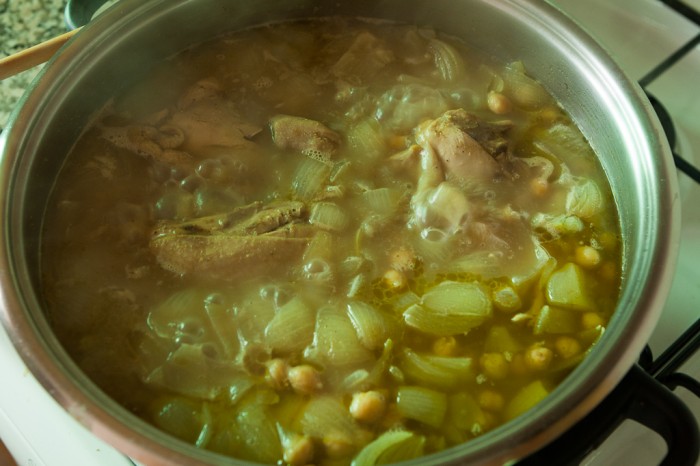
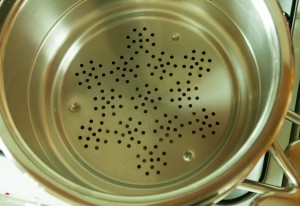
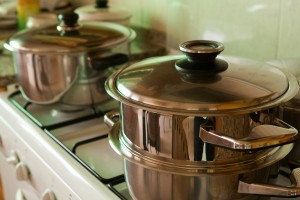
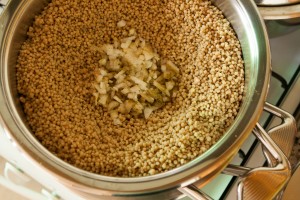
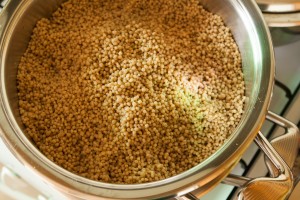
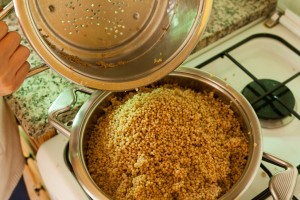
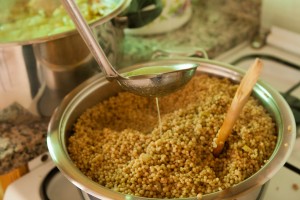
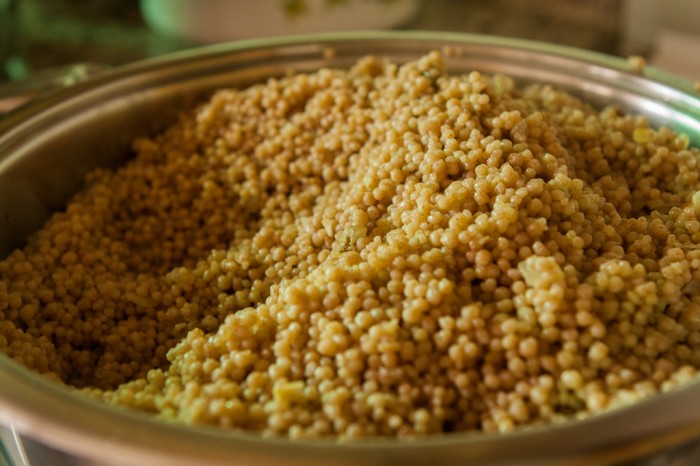


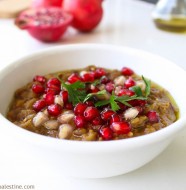
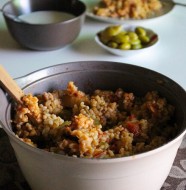
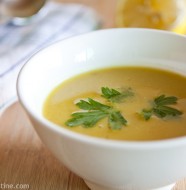

Loved it :)
Thanks Loza :)
Just when I thought Shishbarak was the ultimate cooking challenge, comes Maftoul and raises the bar again!
Thanks for a great post, and God bless Palestinian grandmothers for all the amazing efforts.
Thank you Rami! :)
I absolutely love this dish! though I’ve never made it myself. The place I come from in Mexico has a relatively big community of people with Palestinian origins. I’ve eaten this dish since I was little and I’m curious about it…
Is it widely cooked throughout the Levant region? It has called my attention that it is not nearly as popular among Mexican families with Lebanese backgrounds, so I was just wondering..
I was wondering too if this dish has other names and forms of being served, since here we call it something like “Marma’on”, and commonly serve it as a soup in the broth the chicken was boiled in.
Sorry to bug you with so many questions! Thanks and congrats on your blog!
Thank you Ana for your comment I really appreciate it..
Maftoul is another version of the famous Moroccan couscous which was brought from Morocco to Palestine by Moroccan migrants. Palestinians have adapted it and made some changes on it, and so it became one of the very popular dishes in their cuisine. As for other areas of Levant (Lebanon and Syria), It’s known as “Mughrabiyeh” which means “Moroccan” but it’s less popular than in Palestine.
As for the name marma’on, oh yes! I’ve heard it by some old Palestinians, its another name of maftoul or mugrabiyeh, but its not very common..
Handmade maftoul is widely available online, I recommend you to try it some time :)
Thanks for answering Eman, that’s interesting to know.. Looking forward to more post with great recipes and images! :)
Beautiful photos and detailed recipe. Thank you!
Thank you! I’m glad to have you here.
Wonderful recipe! Made it and absolutely loved it. Many thanks!
Thank you for stopping by Adam. Your comment made my day! :)
this looks absolutely gorgeous.. wonderful recipes and amazing photos!
Thanks Fedz! :)
Tried&tested!:) yumm! Thank you ,,best recipe online!
Glad to hear that! :) Thanks for your comment.
I’m SO glad you have this with pictures and everything! My mother-in-law made maftoul this exact way with the bread dough “steam barrier” and everything. I have to cook this for a big party this weekend, it’s wonderful to have these pictures to refresh my memory! Only difference is she would add butternut squash to the stew I guess it just differs depending on what part of Palestine you stem from! Wonderful.
What is the type of bulgur? Which number?
I absolutely love this couscous, however, this is my first time making this. Can you just leave it in its dried form till you cook stew or whatever dish you are preparing or do you have to precook it and then continue with the recipe? Thanks so much for such an interesting lesson.
You should definitely check how we make it home. Mom still makes it and that’s the only way we have it
http://wp.me/p3Oz5A-4Y
THE OCCUPITED COUSCOUS
Ptitim (Hebrew: פתיתים) is a type of toasted pasta shaped like rice-grains or little balls developed in Israel in the 1950s when rice was scarce. Outside Israel it is sometimes marketed as Israeli couscous or Jerusalem couscous.[1] In Israel it became known as “Ben-Gurion rice” (Hebrew: אורז בן-גוריון órez Ben-Gurion). Today however, it is mainly called “ptitim” across the people.
Yes, the occupied jewish forces gave me some as i waited at the checkpoint for 4 hours to see my Baba before Ramadan… and yes it was tasty….
May this couscus be the food of the liberation of the occupied palistinians!
As my baba always said: The only thng that is constant is change….
Now you are going to own Palestinians’ hundreds year old maftoul as well??!! The creek in Israelis, you have absolutely NO SHAME!
i made this couscous last week but the israeli soldiers came and cut down my lemon trees before i could use them for this meal. any ideas for substitutes ?
I have found it so hard to find a recipe for this, and was desperate, because I used to eat it as a kid, and really wanted to cook it for myself again! Thank you so much. Also my boyfriend will be very happy that you have not added cinnamon as he hates it! ha ! Thank you very much :-)
I meant to type ‘the cheek’ in Israelis, not ‘creek’. Typo.
Couldn’t agree more Bella, PALESTINIAN FOOD rocks! So SOD OFF Israelis, leave this page alone for f….s sake!!
My Grandparents immigrated in the early 1900′s from Palestine to Haiti and throughout my childhood in Haiti, we ate Marma”on, stuffed grape leaves, stuffed cabbage, stuffed eggplants every Sunday. I left in 1982 andI could never find any info about marma’on until today on this site. Many people keep telling me to get Israeli couscous and i refused to do so because i always believed in my heart that the dish was ours.
Thank you for making my day! Now I know I was right!
Also good when made fresh have it with butter and sugar. So good.
Hi Eman the step by step photos are so helpful. I usually steam Moroccan couscous in my couscousier but Ive never tried maftoul.
For steaming the maftoul, do you only steam ot 1 time for 15 min and then it is done? Or do you have to steam for several intervals of 15min? For example with Moroccan couscous, you have tl steam then pour it in a large plte, rake it, stir add more water and put it back to steam for 15 min. Then repeat the process 1 more time.
Wow, wonderful weblog format! How long have you ever been running a blog for?
you make blogging look easy. The overall look of your website is magnificent, let alone
the content! You can see similar: najlepszy sklep and here najlepszy sklep
Hello! Do you know if they make any plugins to protect against hackers?
I’m kinda paranoid about losing everything I’ve worked hard on. Any suggestions?
I saw similar here: e-commerce and also here:
dobry sklep
I know this if off topic but I’m looking into starting my
own blog and was wondering what all is needed to get setup?
I’m assuming having a blog like yours would cost a pretty
penny? I’m not very internet savvy so I’m not 100% sure.
Any tips or advice would be greatly appreciated. Kudos I
saw similar here: Dobry sklep
Good day! Do you know if they make any plugins to assist
with SEO? I’m trying to get my blog to rank for some targeted keywords but I’m not seeing very good results.
If you know of any please share. Many thanks! You can read similar blog here:
Najlepszy sklep
It’s very interesting! If you need help, look here: ARA Agency
Wow, fantastic blog structure! How long have you been running a blog for?
you made blogging glance easy. The entire glance of
your website is excellent, as smartly as
the content! You can see similar here e-commerce